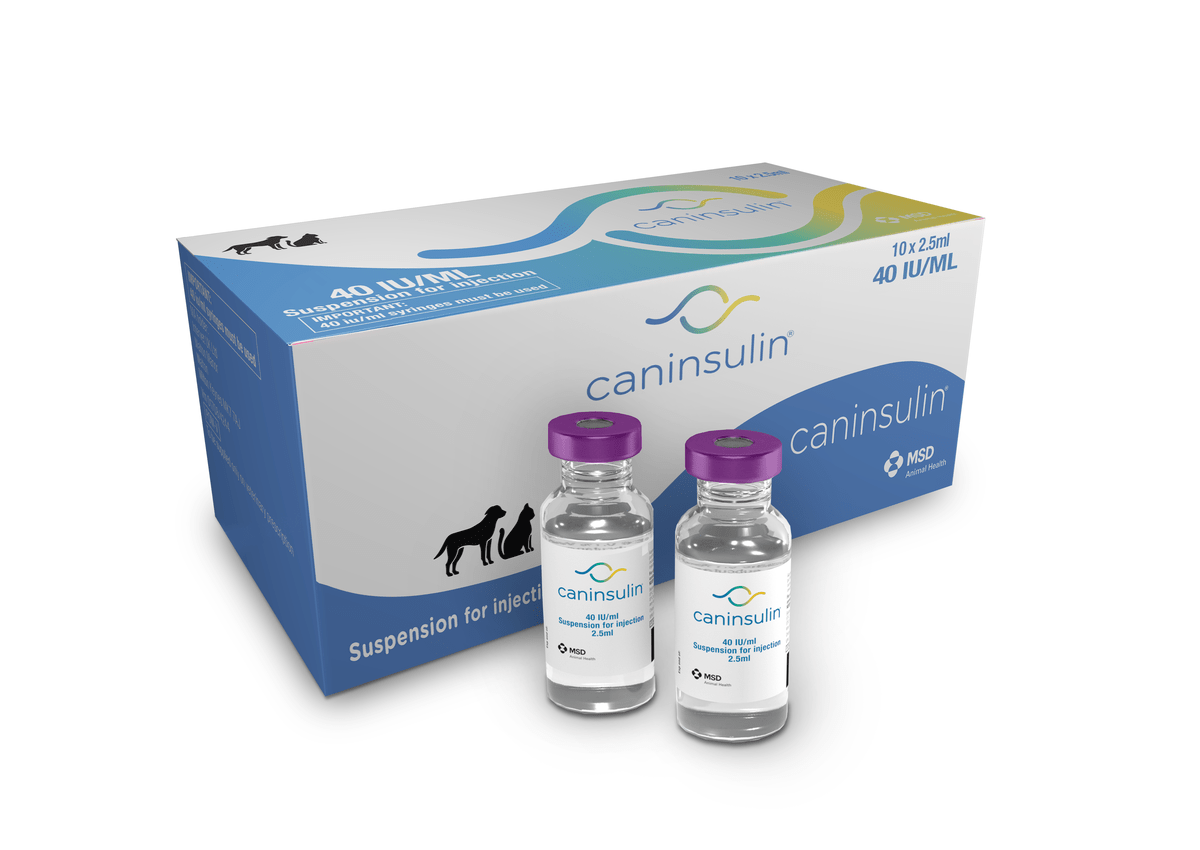
Caninsulin® for Cats with Diabetes
Consult your veterinarian if you are worried about your cat – this could be an emergency!
Read more about how to avoid hypoglycemia
the most common side effect of insulin administration
Caninsulin® is a mixture of two different insulin suspensions – a short-acting aqueous insulin and a long-acting crystalline insulin. These two insulin suspensions settle out during transport and storage and therefore need to be properly and thoroughly mixed, particularly before a vial or cartridge is used for the first time.
Follow the instructions on the package leaflet to mix Caninsulin® thoroughly. The product should be shaken thoroughly until a homogeneous, uniformly milky suspension is obtained. Foam on the surface of the product formed during shaking should be allowed to disperse and, if required, the product should be gently mixed again to maintain a homogeneous, uniformly milky suspension before use.
Do not use if visual agglomerates are present after shaking the product thoroughly for 30-60 seconds. If you are unsure, please consult your veterinarian for advice.
Caninsulin® contains 40 International Units of insulin per milliliter and should be administered using a U-40 insulin syringe or a specially calibrated U-40 insulin injection pen called VetPen®. To avoid potentially dangerous dosing errors, do not use any other type of syringe (U-100 insulin syringe, 1 ml syringe) to administer Caninsulin®.
Caninsulin® does not need to be diluted, even for low doses. Caninsulin® has a concentration of 40 International Units per milliliter (40 IU/ml) and should be administered using a U-40 insulin syringe or specially calibrated U-40 insulin injection pen (VetPen®).
Cats need two doses per day. Cats should be started on twice daily doses of Caninsulin® and the duration of insulin effect assessed. This is something that can be done at home by monitoring your cat’s signs. In addition, further tests like blood glucose measurements can be performed by you at home or by your veterinarian.
Caninsulin® should be injected under the skin (subcutaneously). Your veterinarian will show you how and where to give the injections and advise you on rotating the injection site on both the right and left sides of your cat. Generally, this is done in the area from just behind the shoulder blade to just in front of the hip bone around 2 to 5 cm (1 to 2 inches) from your cat’s backbone. A different place should be used for each injection. Cats have lots of skin and are far less worried about needles and injections than many of us humans – you will soon learn to give injections and both you and your cat will discover this is easy and essentially painless.
- Caninsulin®
- Shake thoroughly before first use until a homogeneous, uniformly milky suspension is obtained.
- Store in a cool and dark place (in the refrigerator) and do not freeze.
- Discard expired product. Caninsulin® has an expiry date (of up to 2 years) and a use by date (which may be up to 28 days or longer) after first opening. Consult your vial or cartridge and package leaflet to confirm the product dating.
- Be prepared – make sure you have supplies to cover eventualities, weekends and holiday periods
- At least one replacement vial or cartridge
- U-40 insulin syringes or insulin injection pen needles
- Your cat’s food
- A source of glucose for emergencies
- Other disposables, such as urine dipsticks, glucometer supplies, etc
- Don’t forget
- Stick to your daily routine
- Record significant changes
- Watch out for subtle changes in attitude or behavior that may indicate clinical remission or that something is wrong
- You can do this!
If you accidentally leave a vial or cartridge of the product outside of the refrigerator between doses, contact your veterinarian for instructions. Your veterinarian will likely need to know whether this was a new vial or cartridge or was already in use, how long the product was outside the refrigerator and roughly what temperature it was exposed to during this period. If you are unsure whether you have stored Caninsulin® correctly, consult the package insert or discuss this with your veterinarian who may advise discarding the product and opening a new vial or cartridge. Caninsulin® should be stored upright, protected from light, is generally stored in a refrigerator (between 2°C and 8°C or 35°F and 46°F), particularly prior to first use of a vial or cartridge.
Insulin is a peptide hormone and can be damaged and rendered ineffective by any extremes of temperature and/or light. Insulin should generally be kept in a cool and dark place and should not be frozen.
Caninsulin® should be stored upright, protected from light, in a refrigerator at temperatures between 2°C and 8°C (35°F and 46°F), particularly prior to first use of a vial or cartridge.
Take care that the product is not in contact with the back of the refrigerator and that the refrigerator is in good working order to avoid freezing the product. If you are worried and think that the product has been frozen accidentally, replace the vial or cartridge that you have been using with a new one.
All syringes and hypodermic needles should be disposed of in an appropriate sharps or biohazard container.
Read the package leaflet for full information about this insulin product including special precautions for use and contraindications.

“I keep hearing, ‘consistency is key’ and I’m starting to understand how it helps manage my diabetes.”
SUGAR

